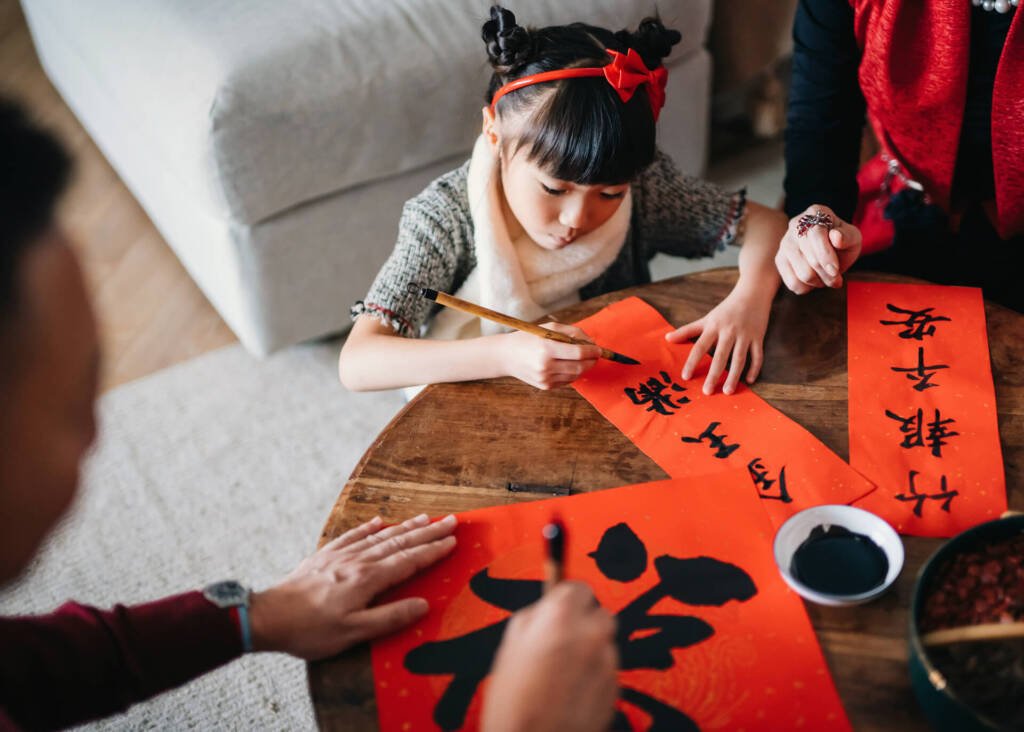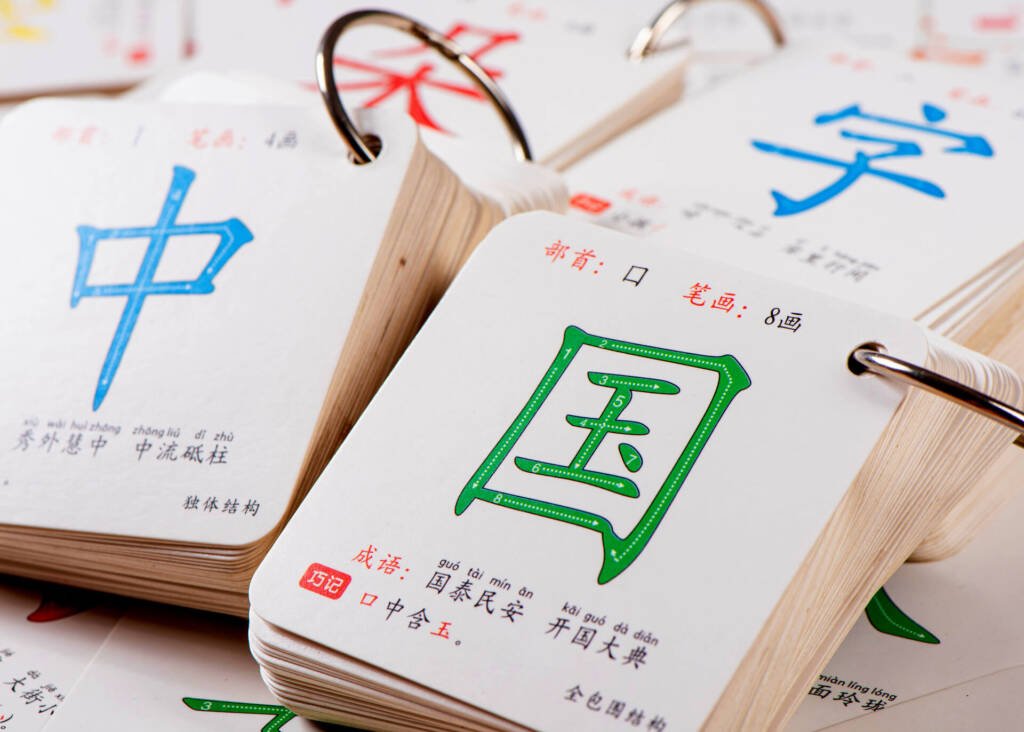Best Way to Learn Mandarin By Yourself: 15 Essential Tips

Are you wondering how to learn Chinese by yourself but keep running into a brick wall? While those studying in a class will have the advantage of a specific course to follow, if you are going to learn Mandarin by yourself, you’ll need to make your own study plan to stay on track. It’s not always going to be easy, but with the right tips and tools, you can make tremendous progress in a relatively short period.
This guide will help you avoid the pitfalls and mistakes that trip up many language learners. Read on to discover the best way to learn Mandarin by yourself!
Is Chinese hard to learn by yourself?
Mandarin Chinese has an unfortunate reputation for being the most difficult language in the world. Reports from international students studying at Beijing University and elsewhere in China do little to encourage people, and Chinese courses have an absurdly high dropout rate.
But the truth is, learning Mandarin not as hard as you think!
The Chinese language can be intimidating for beginners because it uses an entirely different writing system from European languages. Not just a different alphabet, like Russian or Greek, but no alphabet at all. But if you follow the right approach, learning the Chinese writing system may prove the key to unlocking the language rather than simply overcoming a hindrance.
With all the tools of the modern world and an incredible wealth of learning resources at your fingertips, learning Mandarin Chinese is a more achievable goal than ever before.

How long does it take to learn Chinese?
You can’t measure how long it takes to learn a new language in months or years. The path to fluency in a foreign language is measured in hours. If you study five hours a day, it’s safe to say you’ll be fluent long before the guy who scans through a Chinese app on his phone for 30 minutes on his daily commute.
The Foreign Service Institute (FSI) ranks Mandarin Chinese as among the most challenging languages for a native English speaker to learn. According to the FSI, it takes around 2,200 hours of intensive language courses to master Mandarin Chinese, more than almost any other language.
Even the best classes in the world aren’t going to teach you Chinese in a few months. If you were to study for an hour a day, every day, you’d need over six years to reach fluency in Chinese. By comparison, if you want to learn Spanish or Italian as your second language, the FSI specifies a 600-hour course of study.
The main reason for the discrepancy is the Chinese writing system. Learning characters by rote, as they are still taught in many schools today, requires an incredible investment of time and effort.
If you have ever visited China, you’ve likely seen young kids sitting at makeshift desks outside their homes or parents’ places of work, endlessly writing out reams of Chinese characters into little squares. Whether this is a sensible method for Chinese children (who are fluent in Mandarin long before they learn to read or write) is a matter of debate, but it’s the wrong way for foreign students to learn to read or write Chinese.
By learning characters correctly, you’ll save hours of tedious study and feel like you are on a path to discovery instead of banging your head against a wall.
With its intuitive approach, The Mandarin Blueprint Method offers a path to literacy in approximately 841 hours. For committed students studying two or more hours a day, it’s possible to achieve proficiency in Mandarin Chinese in a little over a year.

Learning Chinese by yourself: what NOT to do
Before we jump in and look at the right way to learn Chinese by yourself, let’s first mention some common mistakes you’ll want to avoid. Some of these suggestions may seem counter-intuitive initially, but avoiding these common pitfalls will save you time as you advance. Even if you’ve already learned the Chinese basics, it’s never too late to correct the course.
1. Don’t ask a native speaker how to learn the language
Modeling your speech after native speakers is highly advisable, and finding a conversation partner is an excellent idea once you are ready. Still, native Chinese teachers often have no idea how to teach the language to foreigners.
The best way to learn a foreign language is to learn from people who have gone through the same process, that is, from foreigners who have learned Chinese.
2. Don’t avoid learning Chinese characters
The characters are the most unique and fascinating aspect of Mandarin Chinese and are essential to learning the language. Pinyin is an exceptionally useful tool, but if you can’t recognize the characters, you can’t read Chinese. Simple as that.
3. Don’t treat pronunciation lightly
Good pronunciation is essential when learning any foreign language, especially for a tonal language like Chinese, where the proper tones distinguish between hundreds or thousands of homonyms. You’ll want to accustom yourself to the peculiar sounds of Chinese right from day one.
4. Don’t speak before you are ready
Whether studying by yourself or in a Chinese class, you’ll want to begin practicing the sounds of the language early on. But merely producing the sounds is not the same as speaking Mandarin.
While some schools of thought encourage students to speak from day one, this is not the natural way to acquire a language. Before you start speaking in a foreign language, you need plenty of input and practice. For this, you’ll want to get listening to Chinese and read the written language. Speaking will come later.

How to learn Mandarin Chinese by yourself: 15 tips for success
Now that you know what not to do when learning Chinese by yourself, you are ready to take control of your learning journey. So let’s dive in and explore the right way to learn Chinese. Here are our essential tips that will help you along the way.
1. Begin with pinyin
For many people beginning to learn Mandarin, the thousands of Chinese characters seem as impenetrable as the Great Wall of China. Before you can start learning and memorizing vocabulary, you’ll need some way of writing it down. And when you first start learning Chinese, pinyin is the only viable option.
As the official phonetic system in mainland China for transcribing Chinese characters in the roman alphabet, pinyin is the bridge that connects English speakers to the Chinese language. Learning pinyin is an essential first step in getting to grips with Mandarin Chinese.
Some old-fashioned aficionados of Chinese scoff at pinyin. They say Chinese isn’t written in pinyin, so why should I learn it?
In fact, contrary to popular belief, pinyin was not invented for foreigners but rather to help raise literacy rates across the country. Today, Chinese school children learn pinyin and the Latin alphabet long before they learn to read or write Chinese characters. And although some older folks still input characters using stroke order or radicals, the vast majority of young people now use pinyin to type Chinese on their laptops and smartphones.
Unlike in English, where the same spelling may have multiple pronunciations (consider, for example, the ough in though, through, bough, ought, and rough), in Chinese, pinyin functions as a perfect guide. Although the letters do not precisely correspond to the sounds they make in English, you can learn every sound in Chinese simply by learning pinyin.
Moreover, with only a little over 400 simple syllables, learning the pronunciation principles for the entire language is an attainable goal—something you can achieve in a relatively short time, giving you a huge advantage.
Fortunately, with our complete pinyin primer, Mandarin Blueprint has you covered. Note that the entire range of Mandarin Chinese syllables fit comfortably onto a single A4 page—that should be encouraging enough that conquering pinyin and learning Chinese pronunciation is an achievable goal.

2. Take pronunciation seriously
If you want to master Mandarin Chinese, it’s crucial to build a strong foundation in pronunciation. Learning pinyin syllables is only half the battle. Mandarin Chinese is a tonal language; learning Chinese tones is essential if you want to learn Chinese.
Once you’ve got to grips with the pinyin chart, it’s all too easy to fall into the trap of believing you’ve mastered the romanization and are ready to move on to learn some “real” Chinese. But ignore the Chinese tones at your peril! Not spending enough time mastering the tones will make it difficult for you to distinguish between similar-sounding words, and if you are not using the proper tones, native Chinese speakers won’t understand you.
The Chinese tones are even more critical than the pinyin initials and finals that make up the syllables. Although Chinese people with regional dialects will mix up many of these initials and finals, the tones remain remarkably consistent in spoken Chinese across the country.
Different tones mean different words, even if the pinyin spelling remains identical, and speaking Chinese without using the proper tones is likely to land you in a world of confusion. If you want to avoid making mistakes like calling someone’s mother (妈 mā – first tone) a horse (马 mǎ – third tone), learning how to distinguish between the various tones is a language skill you’ll want to develop early on.
In the Mandarin language, there are four tones:
- The first tone is a flat tone near the top of your range. The voice stays high and flat without rising or falling.
- The second tone starts low and rises to a middle or high pitch. You use this rising tone in English when asking questions, clarifying information, or expressing disbelief.
- The third tone dips down to the lowest point in your vocal range before rising slightly. Non-native speakers often have trouble correctly distinguishing the second and third tones, so pay particular attention to these two.
- The fourth tone starts high and falls rapidly. The tone sounds like a command or assertion in English. Think of the voice you use when telling your dog to “sit,” and you’ll be on the right track.
In addition to these four tones, there is also a fifth “neutral tone.” You don’t need to think about this one too much. It works best when you don’t try too hard; state the syllable without any particular emphasis.
Though it might seem tedious initially, learning to hear the difference between the various tones will help lay a rock-solid foundation for your Chinese skills. The best way to do this is to listen to a native speaker with a standard accent and practice shadowing. Spend time listening to the four Chinese tones and saying them out loud. And remember, be humble. If you think tones are easy, you are probably not hearing your mistakes!

3. Practice those tone pairs
One last thing related to pronunciation mastery is easily overlooked yet essential: tone pairs.
Once you pronounce each Chinese tone correctly, you still need to learn how to string words and phrases together. Though you can pronounce each of the tones in isolation, your tongue gets tied when you try to tie two tones together. Since most Chinese words are formed from two syllables, learning tone pairs is the secret to pronouncing Chinese correctly.
Since the first syllable in a word or phrase is never a neutral tone, there are 20 tone pairs you need to learn. The best way to learn Chinese tone pairs is to choose words you know as tone pair anchors.
For example, let’s say you’ve decided to use 中国 zhōngguó (“China”) as your anchor for the tone pair formed from the first and third tones. Practice this word over and over until it runs off the tongue perfectly. Then, the next time you need to learn vocabulary that has the same tones, you can use 中国 zhōngguó as an anchor—map the new word onto the one you’ve already mastered. As well as helping you improve your spoken Chinese, this process makes learning and memorizing new vocabulary easier.
4. Don’t speak before you are ready
One aspect of The Mandarin Blueprint Method that flies in the face of conventional wisdom is the advice to refrain from speaking until you are ready.
Of course, even as a beginner, you shouldn’t be afraid to try out a few common phrases and greetings, but speaking Chinese fluently before you have enough input is like trying to run before you’ve learned how to walk.
Think of how many words you recognize in your native language but never actually employ in conversation—this is your passive vocabulary. On the other hand, your active vocabulary consists of the words you use daily.
You’ll need significant passive input to increase your active vocabulary. Speaking comes from imitation. You didn’t learn to speak your native language by inventing your grammar and vocabulary. Similarly, you’ll need to listen to native speakers and read what they write before you can start speaking Chinese.

5. Start learning characters early
Since you can read, write, and pronounce every Chinese word using pinyin alone, you might wonder why you should learn Chinese characters.
The most immediate reason for learning Chinese characters is that you can’t read Mandarin Chinese without them. Even with the tones to distinguish between homophones, understanding anything but the most basic texts soon becomes impossible with pinyin alone. You may be able to pronounce the words perfectly, but how are you supposed to know what they mean?
Even if we limit ourselves to words with the same tone and spelling, the Chinese dictionary reveals a bewildering list of homophones. Take, for example, the words for “he,” “she,” and “it” (他 tā, 她 tā, and 它 tā). Without learning Chinese characters, there is no way to distinguish these words.
Whether you learn simplified Chinese or the traditional forms will primarily depend on whether you’ll spend more time on the mainland or in Taiwan. Regardless of where you are based, getting to grips with the written language is essential to mastering the language learning process.
Learning a language entails recognizing patterns. In a language like English, you can often recognize patterns and logical structure in the parts of the word: if you know the words “note” and “book,” you can make a pretty good guess at what a “notebook” might be. In the Chinese language, this information is embedded in the structure of the characters, which is why you should start learning them as soon as possible.
Knowing Chinese characters will also increase your understanding of Chinese culture and history.

6. Learn character components
No one really knows how many characters there are. A modern Chinese dictionary will list around 20,000, while most educated Chinese people recognize around 8,000. As a language learner, you will unlikely need that many, but if you want to reach the level where you read newspapers or novels in Chinese, you’ll need at least 3,000 or so.
While these numbers are intimidating, every unique Chinese character is constructed from a few hundred constituent parts. Learning these building blocks will go a long way toward developing your Chinese reading skills.
Chinese courses and textbooks generally teach a set of 214 components known as “radicals.” For foreign learners of Chinese, the concept of radicals is outdated and unhelpful—even modern Chinese dictionaries rely more on pinyin these days. To improve your reading, you should concentrate on the semantic components that contain clues to the meaning of the character.
Many semantic components are based on the earliest Chinese pictographs, making them some of the easiest characters to memorize. Take, for example, the pictograph 木, which means “tree”—in its earliest form. This was simply a drawing of a tree. Combining two trees, we get 林, which means “woods” or “forest.” Three trees give us 森, which, combined with 林, forms the modern word for forest, 森林 sēnlín.
木 also functions as a semantic component in characters relating to trees, including 树 (tree), 根 (root), and 果 (fruit), as well as in the words for things originally made from wood, including 桌 (table), 椅 (chair), and 床 (bed).
Another example of a semantic component is 氵, which means “water.” You’ll find it in characters such as 海 (sea), 河 (river), and 湖 (lake).
Learning the semantic components can help to level up your Chinese early on and give you an excellent foundation for the future.

7. Use visualization and mnemonics to learn Chinese characters
Chinese children learn characters by rote, writing Chinese characters out over and over in little squares throughout ten years of elementary and middle school. The system is painful, unintuitive, and tortuously inefficient. Yet, in all the years of China’s illustrious history, few Chinese language teachers have questioned this method.
If you’ve spent any time in China, you’ll notice how often young people forget how to write even the most common characters. For a generation brought up on computers and smartphones, without the constant reinforcement that writing Chinese characters by hand provides, the failures of rote learning are embarrassingly obvious.
Most of the advances in this area have come from foreigners who looked at the poor children forced to endure this torture and thought: there’s gotta be a better way. With many characters to commit to memory, rote learning isn’t cut. What you need are visualizations and mnemonics. The most influential resource in this vein is the book Remembering the Simplified Hanzi by James Heisig. Yet, although the Heisig Method represents a massive advance over rote learning, it’s still based on the premise that students must learn the phonetic aspect of the character independently of its structure and meaning.
The Hanzi Movie Method employed at Mandarin Blueprint incorporates everything you need to learn about a character—the meaning, structure, and sound—into a unique visualization. As you learn new characters, you’ll create mnemonics that help you easily recall reading, writing, and pronunciation. With some practice, you can use this method to significantly improve how fast you learn to recognize written Chinese, memorizing 30-60 characters an hour with ease.

8. Learn new words alongside the characters
One way to leverage your mental energy and make the best use of your time while learning Chinese is to learn words alongside the characters.
Once you’ve committed a new character to memory using visualization and mnemonics, learning some of the words in which it appears makes sense.
Not only will this help to build your vocabulary and reinforce the sound and definition of the character, but you’ll be gaining intuitive knowledge of the underlying structures of the Chinese language.
For example, 电 diàn means “lightning” or “electricity.” Some of the common Chinese words it appears in include:
- 电视 diànshì (“electric vision” — television)
- 电话 diànhuà (electric speech” — telephone)
- 电脑 diànnǎo (“electric brain” — computer)
- 电影 diànyǐng (“electric picture” — movie)
- 电池 diànchí (“electric reservoir” — battery)
- 电梯 diàntī (“electric ladder” — elevator)
9. Learn grammar the natural way
First, the good news: the Chinese language is far less grammatically complex than most other languages. There are no plural nouns, no gendered nouns, and no tenses—or at least not in the form of verb conjugation. While some grammar rules exist, Mandarin Chinese allows for much more flexibility than most languages.
The best way to learn Chinese grammar is through exposure to the language. Don’t get bogged down in textbooks. Sentence mining is a much better method. Collect sentences from newspapers and magazines, novels, subtitles, or dictionaries, and use them to create flashcards. Ensure each sentence is comprehensible—if you can’t understand the sentence, you won’t learn anything from it.
The more Chinese sentences you are exposed to, the faster you’ll begin to intuit grammatical rules.

10. Start reading as soon as possible
Reading is incredibly effective for acquiring vocabulary and building proficiency in any language. The more you read, the more exposure you get to natural Chinese, and passive input eventually leads to active output. If you want to speak Chinese, you first need to read.
There is a lot of buzz around sentence mining and Spaced Repetition Software (SRS) in the language learning community these days, particularly among those learning Mandarin Chinese. But remember, the original SRS system is the old-fashioned paper book.
Even if you are only a beginner in Mandarin Chinese, resources are available to help you get started. The most important thing is finding content appropriate to your level. No matter how much you love science fiction, it’s going to be a while before you tackle Liu Cixin’s The Three-Body Problem in the original Mandarin.
The graded readers from Mandarin Companion, consisting of stories told using just 150, 300, or 450 individual characters (depending on the level), offer superb practice for the beginner. For intermediate learners, Chinese Breeze offers some more advanced readers. These books, aimed at non-native learners, provide a fantastic stepping stone toward reading native content.
Phase Four of The Mandarin Blueprint Method is built around graded reading in Chinese, providing you with carefully curated content to help you learn to read Chinese.

11. Immerse yourself in Mandarin Chinese
Learning a language to proficiency means immersing yourself in the language and the culture as much as possible. Unless you live in China, the best way to experience full immersion in Mandarin Chinese is to listen to podcasts or watch Chinese films and TV shows.
When you first start learning Chinese, listen to content designed for non-native speakers. Listen to Chinese podcasts, such as Slow Chinese, to level up your listening skills. The original giant in this field, ChinesePod, has over 4,000 lessons, ranging from newbie level to advanced.
Once you become more confident in your listening skills, you can turn to Chinese TV shows for your listening practice.
As well as being a fun way to improve your listening comprehension, watching Chinese movies will give you a window into Chinese culture. Most Chinese films and TV shows include subtitles in Mandarin, meaning you can learn to read simultaneously while working on your listening skills. Even if you resort to English subtitles sometimes, you’ll still get passive listening input if you force yourself to listen to spoken Chinese.
Talk shows and variety shows often contain cultural references that confuse non-native speakers. Until you are more familiar with Chinese culture or current events, you probably prefer romantic comedies or dramas for your listening practice.
12. Find yourself a Chinese language partner
Once you have enough passive input, it’s time to start practicing your speaking skills. You’ll want to find a language partner, either online or in person, preferably a native Chinese speaker.
If you have a friend in China who is willing to help you out, great! After all, you are not looking for a teacher but a native speaker to practice speaking Mandarin with. If you speak with a friend, you’ll feel more comfortable covering topics you don’t study in your Chinese classes and learn more words and phrases.
Conversing with native Chinese speakers will give you a feel for how the language is used. A good language partner will know how to keep the conversation flowing instead of constantly correcting your mistakes.
If you are not lucky enough to live in China, there are plenty of online resources and tools you can use to learn Chinese online. You can connect with Chinese speakers through platforms like italki and HelloTalk.

13. Know why you are learning Chinese
Why are you learning Mandarin Chinese? Are you fascinated with China’s rich culture and Chinese history? Are you teaching English abroad and need to learn Mandarin Chinese for work? Are you learning Chinese for travel?
Maybe you love kung fu.
By knowing what you want to get out of studying Chinese, you can direct your practice toward these goals. If you want to improve your spoken Chinese for travel, concentrate on simple conversations, listen to Chinese audio, and interact with Chinese speakers. If you plan to engage with traditional Chinese literature, read as much as possible, and consider studying traditional Chinese characters.
Whatever your reason for learning Chinese, be clear about your goals. Learning Mandarin takes a long time, and without specific goals in mind, it will be hard for you to stay motivated. By setting your targets and being clear about your motivation, you’ll find it easier to stay on track.
14. Make time to review
When learning a new language, it’s easy to fall into the trap of racing through new material, always trying to learn something new.
If you are learning Mandarin Chinese in a class, you’ll follow a textbook introducing a new lesson each week. Chinese classes rarely leave enough time for review, but if you are serious about learning Chinese by yourself, you’ll need to repeat things to ensure you don’t forget what you know. Daily practice is essential.
Language learning apps can be a huge help here. SRS software, such as Anki, is a fantastic tool for reviewing what you’ve already learned. Creating your own simple sentence flashcards or using specially designed decks, such as those from Mandarin Blueprint, will help keep words and phrases fresh in your mind. Make it a daily habit.
Another helpful app to use on your commute or coffee break is Skritter, an excellent tool for practicing writing Chinese.

15. Make it fun
If you want to learn anything more than the Chinese basics, you’ll need to find a way to retain your motivation over the long term.
Learning Mandarin Chinese is difficult and time-consuming, and you’ll need to settle in for a long ride. If you are learning Chinese alone, the journey can get lonely sometimes.
Studying Chinese can also be incredibly rewarding, even fun. It all comes down to finding ways to improve your language skills by doing what you enjoy.
Here are just a few ideas. If you enjoy music, listen to Chinese music. Study Chinese songs and lyrics. Maybe even try to write your own. Have fun with it.
If you like to read, explore some Chinese novels or short stories. If you’re a movie fan, watch Chinese films and TV shows. For gamers, try playing your favorite computer games in Chinese.
Connect with people in China through online forums, where you can discuss your hobbies and interests.
Be sincere about learning Chinese without being overly serious. If learning the language feels like work, you’ll likely lose motivation long before reaching proficiency. Make it fun!








